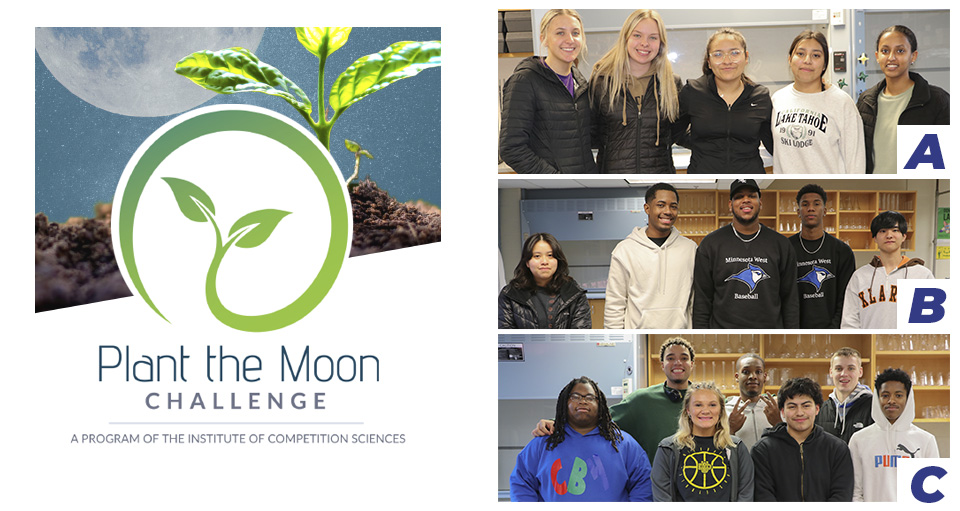Biology Bluejays Shine in Plant the Moon Challenge: Exploring Lunar Agriculture

This spring, three teams from Instructor Heidi Tarus' Principles of Biology I course participated in the Plant the Moon Challenge. With funding from NASA’s Minnesota Space Grant Consortium, they aimed to find the best way to grow nutritious food on the Moon. Two out of three Minnesota West Bluejay teams earned the Best in Show awards in the undergrad/professional category for their contributions to experimental design and plant growth.
Six students from the Bluejays A Team focused on the effect of urea and bone meal
on the growth of Collard Greens (Brassica oleracea). Don Huynh, Autumn Luinenburg,
Jocelyn Matias, Bailey Ponto, Amarilyz Vega Hernandez, Hermela Yisak, and Instructor
Heidi Tarus.
In their preliminary research, the team uncovered that Collard Greens need more than
just nitrogen to grow well. They also need phosphorus and calcium. Through their experimentation,
the team discovered that urea might be the sole additive necessary for promoting Collard
Green growth in lunar regolith. Through careful planning and insightful hypotheses,
the Bluejays A Team made progress in finding ways to grow food on the Moon.
The Bluejays C Team investigated how to grow Mung Beans under moon-like conditions. They looked at the effects of bone meal and endomycorrhizal fungi on growth. Eight students participated: Elijah Alexander, DaShawn Clark, Olivia Hensch, Diego Montoya, Terrence Pierre, Elijah Robinson, Adrian Sanchez, Fanuel Wolday, and Instructor Heidi Tarus.
Plants need nitrogen, phosphorus, and calcium to make proteins, DNA, and cell walls. The team added peat moss to the soil to help the plants grow better. They tested two things: Bone Meal and Fungi additives, to see how they affected plant growth. Plants in pots with bone meal and fungi grew tallest, had the most leaves, and had bigger roots. They also noticed that these plants had darker green leaves. The team wants to try adjusting the soil's acidity, adding more nutrients like potassium, and studying how fungi and plant roots work together.
Through their research and innovative approaches, the experiments opened doors to a multitude of future investigations. The teams have taken significant steps toward realizing the vision of sustainable food production in space. With NASA planning missions to explore the Moon, learning how to farm there is crucial.
Congratulations to all the PTMC Best in Show Award Winning Teams!
 |
 |
 |
 |
 |
 |
